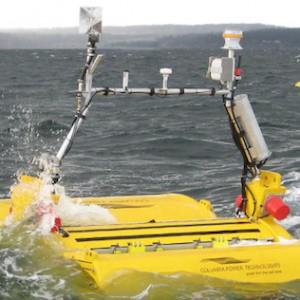As the trend of shifting from fossil fuel to safe and earth friendly renewable energy is up and running on a global scale. An American energy firm, in cooperation with the U.S. Navy, has focused on the lagging, but still promising source of renewable energy; wave energy.
Columbia Power Technologies prove to be another eco-friendly unit of our society as it introduces StingRAY wave energy converter.
StingRAY wave energy harnessing renewable energy
It is basically a machine that is set in the ocean to convert the ocean’s natural waves into useful energy.
It is still at its “Test” phase at the US Navy’s naval facility in Hawaii but is intended for utility-scale use.
By the way, not only has the US Navy housed the wave energy test site, they have also funded the project through its Naval Facilities and Engineering Command to the amount of $ 3 million.
The very simple principle behind StingRAY wave energy
StingRAY basically relies on the natural movement of the ocean waves to drive a piston up and down to move another device that will create mechanical energy. The mechanical energy is converted to electrical energy by a generator and that’s that.
As simple as it sounds, our experts are still working on a few kinks here and there. Though there is already a physical model that’s undergoing several test runs, we can assume that there will still be a lot of variations in the final design when they have done their renovations.
America and Scotland first to further develop wave energy technologies
The U.S. is only second to Scotland who has already gone ahead in the development of wave energy. But, neither Scotland nor the U.S., with the StingRAY wave energy converter, has caught up with the advances of other renewable energy sources like solar and wind.
But, the good thing about it is that the wave energy development was able to do a lot of shortcuts with the application of proven concepts that had to go through a lot of scrutiny and development in the other renewable energy study table. Such is the case with the StingRAY wave energy converter whose main component is the direct-drive system that was drawn from the wind energy technology.
Have no doubts of StingRAY corroding in the salty seas. The developers made sure that all materials exposed are corrosion-resistant and designed to minimize the cost of maintenance and repair.
Unlike the off-shore wind plants, the StingRAY wave energy converter only has a small part of it visible above water. So aesthetically speaking, these wave energy converters will be less of an eyesore.
Though StingRAY’s development is on a fast track, everyone had to wait a little longer. The full scale demo project is still slated on 2016.
Aside from the StingRAY wave energy converter, we have another wave energy converter called PowerBuoy which is being developed by Ocean Power Technologies. And like StingRAY, it is already undergoing test runs at the New Jersey coast.
Though wave energy is slightly behind all other sources of renewable energy at the moment, we will surely see and feel its strong presence in the next few years.



